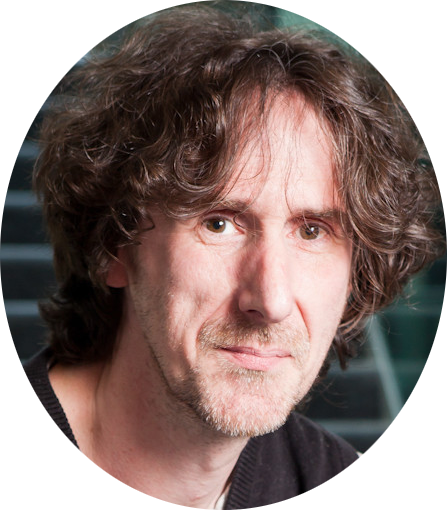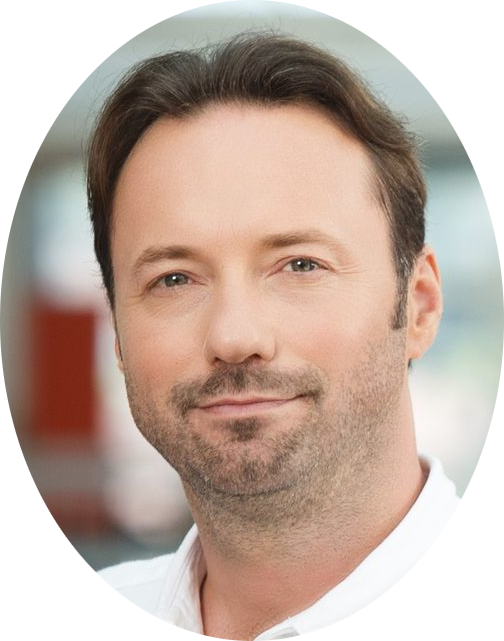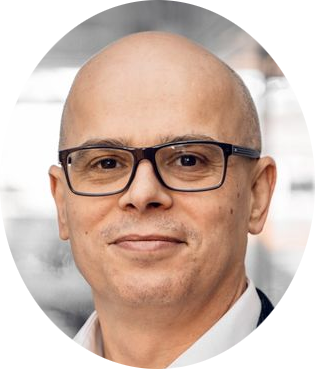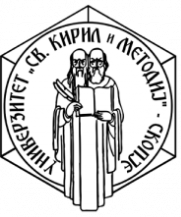Conference Program
The Preliminary Program for IWSSIP 2025 is now available.
Instructions for authors
Presenters will be allocated a maximum of 15 minutes for their presentation plus an additional 3 minutes for Q&A. All presentations are encouraged to be provided in pdf, odp, ppt or pptx format, prepared with Microsoft PowerPoint, LibreOffice Impress, Google Slides, Latex Beamer or equivalent. Presenters are required to bring their presentation on a USB flash drive or provide an online link to the session chair in the meeting room 15 minutes prior to the start of the session.
Keynotes

Phil Garner
Idiap Research Institute, Martigny, Switzerland
Exploring biologically plausible components in speech processing
Speech technology was one of the defining applications of deep learning from its outset and is now established as one of its success stories. Speech recognition works well; speech synthesis is natural and intelligible. Given that the technology has always been inspired by biological function, a question that arises is whether the inference can be inverted; can the technology say something about the biology that it has been trained to mimic? I argue that one way to do this is to build speech technology using biologically plausible components. It should then be possible to look at what these components have learned and take it as being representative of biology. As a first example I’ll describe a muscle model, developed for speech prosody but with wider application. A second example is the (human) cochlea; I will briefly describe some experiments with unexpected biological analogues. A third example is that of spiking neural networks; I will present some results on speech processing and how such networks can reproduce signals known to exist in EEG measurements. Although all the predicted phenomena are already understood, it may be hoped that, as confidence in the technology matures, we may be able to use such models to make new inference about biological function.
Philip N. Garner received the degree of M.Eng. in Electronic Engineering from the University of Southampton, U.K., in 1991, and the degree of Ph.D. (by publication) from the University of East Anglia, U.K., in 2012.
He first joined the Royal Signals and Radar Establishment in Malvern, Worcestershire working on pattern recognition and later speech processing. In 1998 he moved to Canon Research Centre Europe in Guildford, Surrey, where he designed speech recognition metadata for retrieval. In 2001, he was seconded (and subsequently transfered) to the speech group at Canon Inc. in Tokyo, Japan, to work on multilingual aspects of speech recognition and noise robustness.
As of April 2007, he is a senior research scientist at Idiap Research Institute, Martigny, Switzerland, where he continues to work in research and development of speech recognition, synthesis and signal processing.
He is a senior member of the IEEE, and has published internationally in conference proceedings, patent, journal and book form as well as serving as coordinating editor of ISO/IEC 15938-4 (MPEG-7 Audio). He is currently on the editorial board of Speech Communication and has previously served as associate editor and senior area editor for Signal Processing Letters.
Fighting DeepFakes and Face Morphing Attacks
The increasing sophistication of generative models has led to a surge in deepfake and face morphing attacks, undermining the integrity of face recognition systems and enabling various forms of identity fraud. A critical challenge in detecting such attacks lies in the poor generalization of existing models to unseen manipulation techniques. Traditional supervised detectors often perform well when evaluated on data similar to the training set but degrade significantly on novel forgeries. To address this, recent approaches have reframed the detection problem as an out-of-distribution task, enabling models to learn generic representations of facial alterations. By generating diverse local perturbations and guiding the learning process through contrastive objectives, these methods enhance robustness and localization of subtle manipulations. Additionally, self-supervised learning has emerged as an effective paradigm, also for morphing attack detection, where simulated artefacts allow models to learn decision boundaries that are not tied to specific attack types. Experimental results on multiple benchmark datasets confirm that such approaches can substantially reduce detection errors, outperforming both traditional supervised and unsupervised baselines in cross-manipulation scenarios. These findings underscore the importance of generalization-driven strategies in combating evolving threats posed by synthetic facial manipulations.
Peter Peer is a Full Professor at the Faculty of Computer and Information Science, University of Ljubljana (UL), Slovenia, where he heads the Computer Vision Laboratory, is a member of the Faculty senate, a member of the Faculty management board, and coordinates the double degree study program with the Kyungpook National University (KNU), South Korea. He received his PhD in computer science from UL in 2003. Within his post-doctorate he was an invited researcher at CEIT, San Sebastian, Spain. His research interests focus on biometrics and computer vision. He participated in several national and EU funded R&D projects and published over 150 research papers in leading international peer reviewed journals and conferences. He is a co-organizer of a number of competitions at top-tier biometrics conferences. He serves as an executive editor at ICT Express, as an associated editor of IET Biometrics and IEEE Access, and as a topical advisory panel member of MDPI Applied Sciences. He is a member of the EAB, IAPR, and IEEE. Each year he reviews for top-tier conferences. In the past he also served as a chairman of the Slovenian IEEE Computer chapter for four years and guest edited a number of special issues in different SCI journals. He was a guest professor at the North-Caucasus Federal University and KNU and served at the Faculty as a vice-dean for economic affairs for four years. At present he also serves as the chairman of the Slovenian Pattern Recognition Society.

Peter Peer
Faculty of Computer and Information Science, University of Ljubljana, Slovenia

Petar Popovski
Aalborg University, Aalborg, Denmark
Real-Time Wireless Intelligence in 6G
With the advent of 5G technology, the notion of latency got a prominent role in wireless connectivity, serving as a proxy term for addressing the requirements for real-time communication. As wireless systems evolve toward 6G and embrace Artificial Intelligence (AI), the ambition to immerse the digital into physical reality will increase. This talk will present the general concept of timing in wireless communication systems and its relation to effective information generation, processing, transmission, and reconstruction at senders and receivers with increasing levels of intelligence. It starts by discussing latency and its components in systems that involve wireless communication and computing. The notion of one-way latency will be generalized to closed-loop latency, which is particularly relevant for goal-oriented communications. Next, it will present other timing measures beyond latency, such as Age of Information (AoI) and its derivatives. Inspired by multisensory perception in humans, the talk will introduce Temporal Windows of Integration (TWI) for wireless systems that combine sensing and communication and show their role in determining causality and simultaneity in perceptive wireless networks. One of the takeaways is that the future Base Stations and Access Points will have a timestamping functionality that determines the chronology of the events, simultaneity, and causality, ensuring trustworthiness of the mapping between the physical world and the digital world.
Petar Popovski is a Professor at Aalborg University, where he is the director of the Center of Excellence CLASSIQUE (Classical Communication in the Quantum Era). He holds a position of a Visiting Excellence Chair at the University of Bremen and a Visiting Professor at the University of Sts. Cyril and Methodius (UKIM) in Skopje. He received his Dipl.-Ing (1997) and M. Sc. (2000) degrees in communication engineering from UKIM and the Ph.D. degree (2005) from Aalborg University. He is a Fellow of the IEEE. He received technical recognition/achievement award from multiple Technical Committees of the IEEE Communications Society: Smart Grid Communications (2019), Wireless Communications (2024), and Satellite and Space Communications (2025). In addition, he received ERC Consolidator Grant (2015), the Danish Elite Researcher award (2016), IEEE Fred W. Ellersick prize (2016), IEEE Stephen O. Rice prize (2018), the Danish Telecommunication Prize (2020), and Villum Investigator Grant (2021). He was a Member at Large at the Board of Governors in IEEE Communication Society and past Chair of the IEEE Communication Theory Technical Committee. His research interests are in the area of wireless communication and communication theory. He authored the book “Wireless Connectivity: An Intuitive and Fundamental Guide”, published by Wiley in 2020. He is currently an Editor-in-Chief of IEEEE JOURNAL ON SELECTED AREAS IN COMMUNICATIONS.




